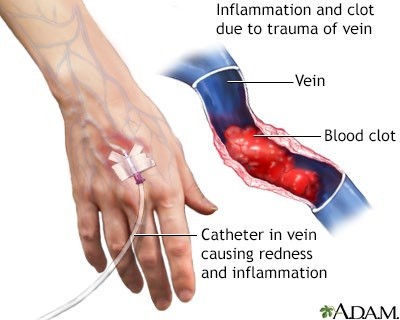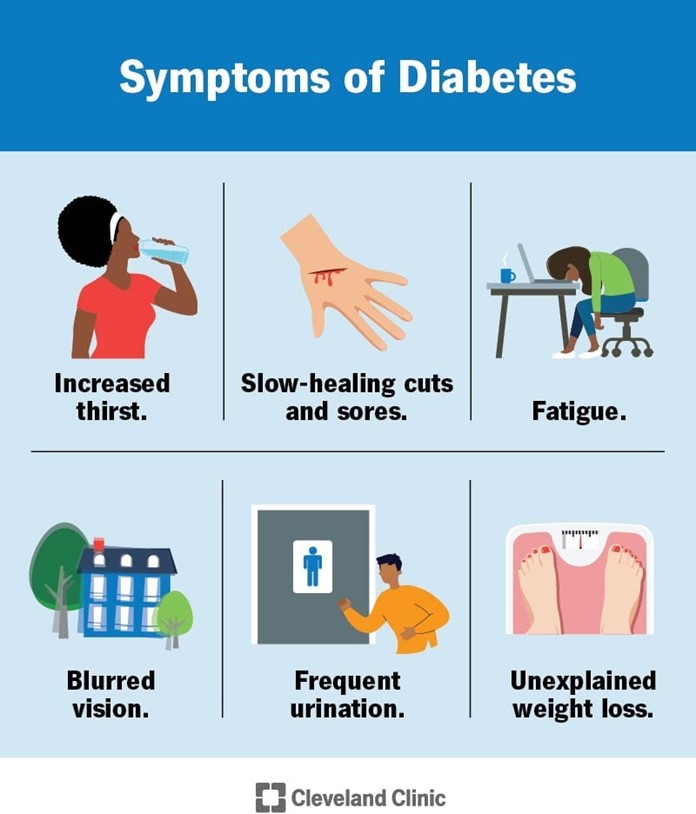A nurse is monitoring a client who is receiving continuous IV fluid therapy via a peripheral vein in the left forearm. Which of the following findings indicates that the client has developed phlebitis at the IV site?
Erythema along the path of the vein
Coolness of the client's left forearm
Pallor of the client's left forearm
Pitting edema at the insertion site
The Correct Answer is A
The development of erythema (redness) along the path of the vein indicates phlebitis at the IV site. Phlebitis refers to inflammation of the vein, often caused by irritation or infection. When phlebitis occurs, the vein becomes inflamed and can appear red, warm, and tender to touch. Erythema is a characteristic sign of phlebitis and suggests that the client's IV site has become irritated or infected.
Let's now discuss why the other
Options are not the correct answers:
- Coolness of the client's left forearm: Coolness of the forearm is not typically associated with phlebitis. Instead, it may suggest compromised blood flow to the area, such as arterial insufficiency, rather than inflammation of the vein.
- Pallor of the client's left forearm: Pallor, or paleness, of the forearm is not a typical finding in phlebitis. It usually indicates reduced blood flow or decreased oxygenation to the area, which can be caused by factors other than inflammation of the vein.
- Pitting edema at the insertion site: Pitting edema refers to the indentation that remains when pressure is applied to an area of swelling and then release. While edema can occur at the insertion site of an IV, it is not a specific indicator of phlebitis. Edema can result from multiple causes, such as fluid overload or localized inflammation, and its presence does not necessarily confirm the presence of phlebitis.
In summary, the presence of erythema along the path of the vein is the finding that indicates the development of phlebitis at the IV site. This redness suggests inflammation of the vein, which can be caused by various factors including irritation or infection. The other
Options, such as coolness of the forearm, pallor of the forearm, or pitting edema at the insertion site, are not specific indicators of phlebitis and may be associated with different underlying conditions or factors.

Nursing Test Bank
Naxlex Comprehensive Predictor Exams
Related Questions
Correct Answer is C
Explanation
The correct answer is that the client can apply lotion to their feet if they avoid the area between their toes. Moisturizing the feet can help prevent dry skin and cracking, which are common problems for people with diabetes. However, it is important to avoid applying lotion between the toes, as this can create a moist environment that promotes the growth of fungus and bacteria¹.
Options a, b and d are not correct statements by the client that indicate an understanding of proper foot care for diabetes. Using a pumice stone to soften calluses on the feet, going barefoot just in the house and using a heating pad when feet are cold are not recommended practices for people with diabetes.

Correct Answer is A
Explanation
If a nurse is caring for an older adult client who tells the nurse that they have smoked one pack of cigarettes every day for the last 60 years, the next action the nurse should take is to ask what the client knows about the effects of smoking. This will help the nurse assess the client's knowledge and understanding of the risks associated with smoking and provide an opportunity for education.
Option b is incorrect because working with the client to establish a quit date is important but not the next intervention.
Option c is incorrect because suggesting that the client use nicotine gum to facilitate quitting is important but not the next intervention.
Option d is incorrect because referring the client to a local smoking cessation program is important but not the next intervention.

Whether you are a student looking to ace your exams or a practicing nurse seeking to enhance your expertise , our nursing education contents will empower you with the confidence and competence to make a difference in the lives of patients and become a respected leader in the healthcare field.
Visit Naxlex, invest in your future and unlock endless possibilities with our unparalleled nursing education contents today
Report Wrong Answer on the Current Question
Do you disagree with the answer? If yes, what is your expected answer? Explain.
Kindly be descriptive with the issue you are facing.
